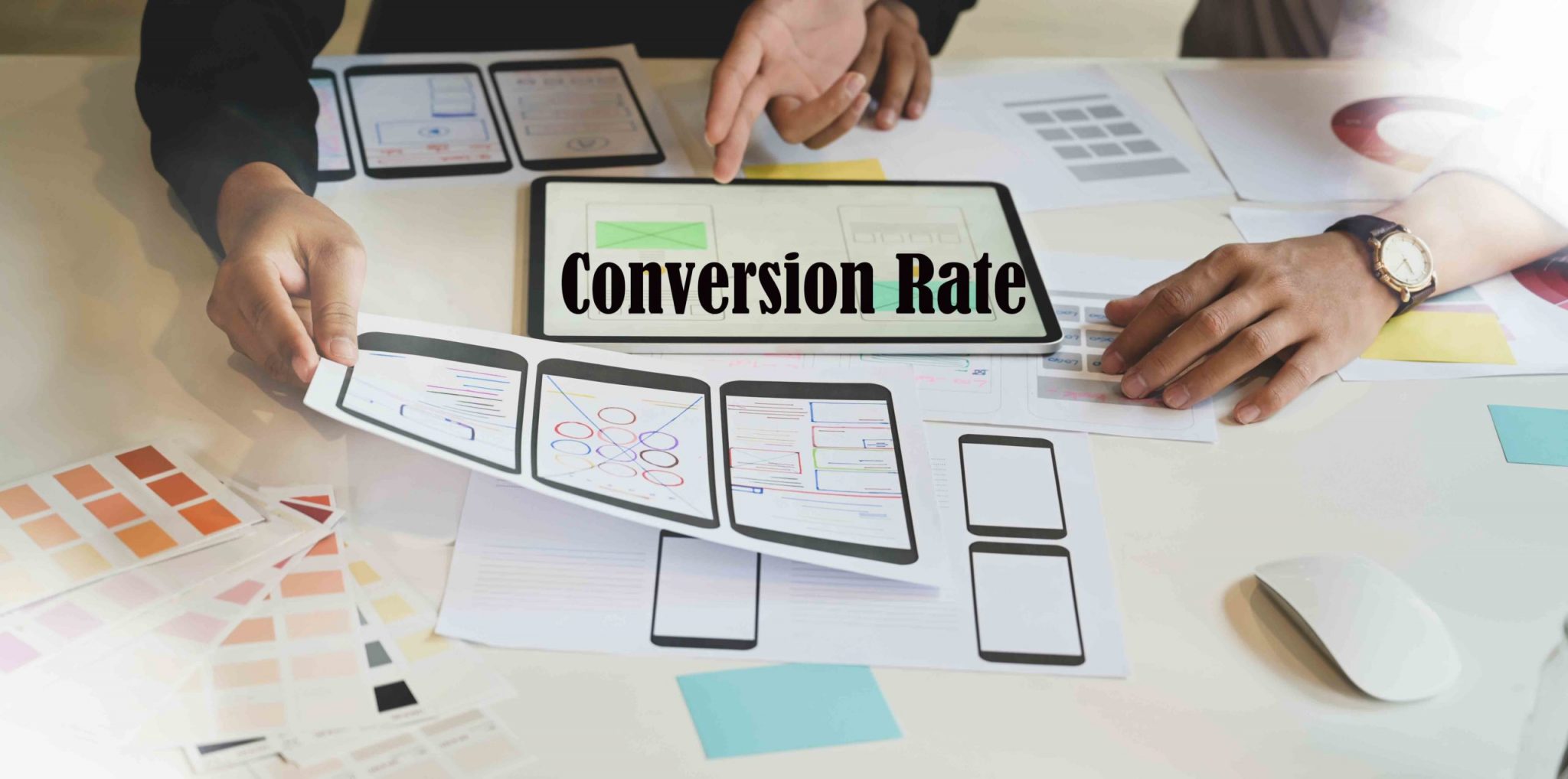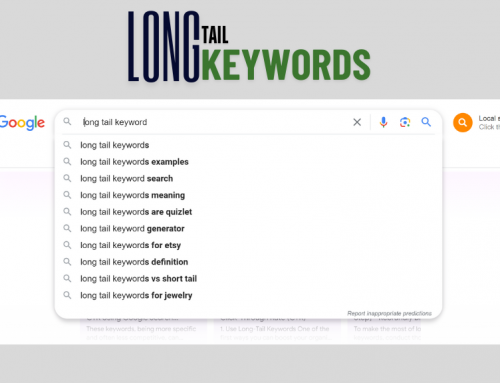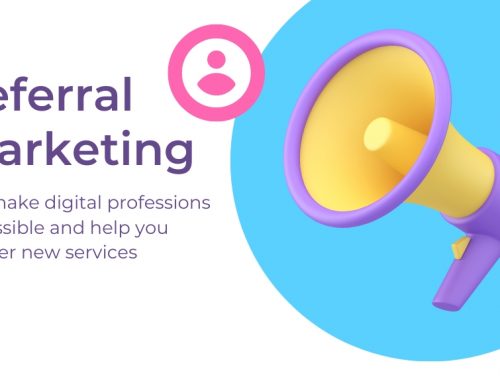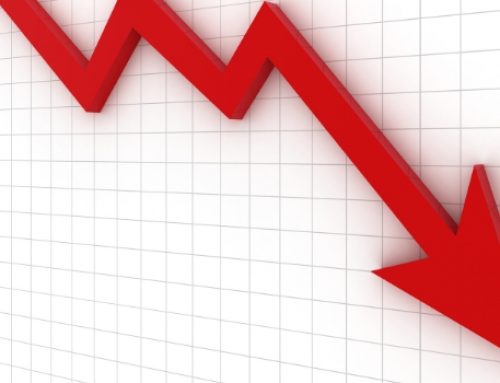Ways to Increase Your Conversion Rate Right Now
What is the conversion rate and what is its place in the growth of Internet businesses?
Have you ever wondered how you find yourself doing the right thing when you spend money and effort on your business? There is a metric that tells you how successful you have been in attracting your customers, which is called conversion rate.
“Conversion rate” is one of the best indicators to evaluate the effectiveness and efficiency of marketing campaigns. The conversion rate clearly shows the results of your efforts to persuade people to do what you want them to do (what we call “conversion” in the marketing world), So naturally the higher the conversion rate the better.
In this article, we will answer the following questions regarding conversion rates:
- What is the conversion rate?
- How to calculate the conversion rate?
- How to increase the conversion rate?
What is the conversion rate?
Simply put, conversion rates are the percentage of visitors to your website or landing page who convert (that is, do what you want them to do). Depending on your business goals, “conversion” can be almost anything, but the most common types are:
- Make purchases.
- Completing and submitting a form (contact form, interested customer production form, and the like).
- Contact your company.
- Use the online chat system of your website.
- Activate a subscription (paid or free, such as a weekly newsletter subscription).
- Register on the website and activate the account.
- Download an item (an experimental software, e-book, mobile app and the like);
- Use something (for example, new features or advanced software or even software or apps or apps you for a specified period).
- Upgrading the services received (for example, upgrading a regular plan to a professional one).
- More interaction with the site (increase the time spent on the website, more visits, more pages visited the site, and the like).
There are many other conversion practices and behaviors, but these can well illustrate the concept of “conversion.” Conversion is essentially a measurable action that drives a potential customer to become an actual customer.
How to calculate the conversion rate?
Calculating the conversion rate is relatively easy. All you have to do is divide the number of conversions done in a given period of time by the number of visitors to the site or landing page and multiply the result by 100 and express it as a percentage.
Conversion rate = (number of conversions ÷ total visitors) × 100%
For example, if your website received 17,492 targetedwebtraffic in the last month, of which 2,305 people did what you wanted them to do, your conversion rate for that month would be 13.18%. As you can see, calculating the conversion rate is not difficult, but in practice, it will be even easier to calculate this index because most online advertising services (such as AdWords) and site analytics platforms (such as Google Analytics) with the right settings automatically They calculate the conversion rate for you and show it in their user interface.
One of the advantages of the conversion rate is its flexibility, which means that you can limit or expand the scope of your action as much as you want. Here are some examples of different types of conversion rates:
- Overall conversion rate (What is the overall performance of your website in converting traffic from different sources?).
- The conversion rate of a marketing channel (what is the conversion rate of AdWords traffic? Has the traffic received through this rate had a higher conversion rate?).
- Page conversion rate (which tab of the website performs better in converting incoming traffic?).
- Conversion rate Campaign (the Campaign was implemented in transforming how users?).
- Ad conversion rate (How did the ad perform in converting users? Do you need to change the text? Does this ad get the right customers to your website?).
- Keyword conversion rate (How do keywords perform in conversion? Which keyword is more valuable for investment?).
The list above is just a handful of examples. Conversion rate is one of the best indicators to evaluate the performance of various dimensions of internet marketing. However, you should keep in mind that while it is a good idea for people to come to your website or click on them, they will not make much money if those referrals and clicks do not end up being something that is beneficial to your business. As a result, you need to look for the necessary injuries and adjustments.
Is duplicate conversion also calculated at the conversion rate?
You are probably wondering here, “But what if a person changes many times?” How do these conversions affect my conversion rate? “Should I count them as one conversion or multiple conversions?”
These are all important and influential questions. Basically, marketers use a different term to describe each situation in order to solve the problem of the sum of conversions and duplicate conversions.
As mentioned above, the conversion rate is equal to the number of conversions divided by the number of visitors. To see the percentage of converted visitors (regardless of the number of conversions of each of them), divide the converted visitors by the total number of visitors and multiply the result by 100 and express it as a percentage. This index is commonly known as the “click-through rate”.
Click conversion rate = (converted visitors ÷ total visitors) × 100
For many businesses, the conversion rate is equal to the click-through rate; So, in this article, we will focus on the conversion rate. However, the click-through rate can also be a useful indicator in situations where you have multiple duplicate conversions and want to know what percentage of your visitors are converting.
In calculating the conversion rate, pay attention to the volume and quality of information. An important point to consider when calculating the conversion rate is the quality and scope of the information you have. For example, statistics may show a 100% conversion rate for your website, but what if your website has only one visitor and the same person?
In general, if your statistical population is small, you cannot rely on the results obtained. For example, imagine that if 5% of the 20 people on your website were converted and one of them did the job you wanted to do (which is not unlikely), can you say that your performance was good? Probably not, since your conversion was random.
On the other hand, if 5% of 10,000 people convert and 5 of them are converted randomly, your conversion rate drops from 5% to 4.95%; But this information is relatively reliable.
Because each targeted organic website traffic has a percentage of error (random conversions, people who tried to convert but did not convert for any reason, certain time intervals with high or low conversion rates, and the like) the only way to get a statistic Reliable conversion rate is a relatively long time to calculate.
Of course, it is not possible to have a complicated version and a specific time frame for all businesses. Many marketers use one-month time intervals, but if you have a large website like Channel0401.info, one day’s information will probably be enough to get a reliable statistic.
What is the best conversion rate?
Numerous studies have been conducted to determine the average conversion rate in different areas of the business. Consider the following example as an example:
In general, a conversion rate of 2 to 5 percent is a moderate or good conversion rate. Of course, if your conversion rate is 2% and you can increase it to 4%, you will experience a decent growth, but you should note that the range of 2 to 5% is an average for the conversion rate, and with this statistic to reach You are at a distance from the privileged categories.
Another thing to keep in mind is that conversion does not always mean buying; However, the ultimate goal of most conversion marketing-related actions is not more, but more sales. As a result, while conversion rates are a useful indicator if you cannot take the right steps and turn a converted user into an actual customer, even a good conversion rate cannot generate revenue for your business.
As you should have noticed by now, the conversion rate varies considerably depending on factors such as the high quality website traffic, the scope and type of business, what you sell, and even the action you are monitoring. As a result, although different figures can be generally assigned to different areas of the business based on the available statistics, a good conversion rate for you will depend on your business and your marketing campaign.
How to monitor the conversion rates?
Although the conversion rate may not be the only indicator of success, it is still an important and effective indicator for monitoring performance. Naturally, to calculate the conversion rate, you must be able to monitor the performance of various activities, including conversion activities.
If you have enough knowledge or use the services of experts in this field, monitoring the conversion will not be difficult and will be worth every effort and expense. Keep in mind that you cannot improve what you do not know, and if you do not monitor your marketing results, how can you find out what measures are effective and which sector needs strengthening and improvement?
Note that statistics show that the number of individuals and companies that closely monitor their conversion rates and make decisions about the next steps based on the information they receive is not large, so if you are in this group with the correct and calculated actions Take, you will find a golden opportunity to overtake competitors.
Basically, monitoring conversion status gives you a better understanding of your website traffic. In fact, by being aware of what users are doing after entering your website, you can evaluate their quality and relevance. Of course, as mentioned before, in most advertising systems and analytics platforms, it is possible to directly monitor conversion rate statistics, including:
- Google Analytics
- AdWords
- Facebook Traffic & Ads (and Instagram Ads)
- Twitter Ads
- Promoted Pins Pinterest
Methods for monitoring conversions through Google Analytics
To monitor conversions through Google Analytics, we use the Goal setting feature of this tool.
- Monitor a specific address
In this type of conversion monitoring, you monitor the opening of the URL of a specific page of your website; For example, pennhillswiki.com/thank-you. This method is usually used to monitor the completion of the form submission process. To do this, go to the Admin section from the side menu and then on the right in the view section on goals and then click on the red NEW GOAL button. From here, you will enter a three-step process that is common to all of the following methods.
In the first step (called Goal setup) you select a default template or use the Custom option at the end of this section to make the necessary settings yourself. The second part (called Goal description) is the step of naming and selecting the Goal type. In the last step (called Goal details), depending on the type of Goal selected, you make the necessary settings.
To monitor and address, first, click on Custom and then on the Continue button. In the Name field, select a name and then the Destination option. Then go to the next step again using the Continue button and enter the desired page address in the box above the Equals to the menu. Note that it is not necessary to enter the full address; Just enter the address after the domain. If you want to monitor multiple addresses that start with the same character, you can change the menu next to this box to Begins with. Finally, by pressing the save button, you finish the job and start the monitoring process.
This type of goal can show you the conversion status of users on your website keywords. The information you gain here will be very useful in determining the relevance and quality of the users attracted to the website.
- Monitor user time
Do you know how long each user lasts on your site on average? Is there a connection between users’ presence time and their conversion into a customer? Instead of speculating, you can define a Duration goal in Analytics. This type of conversion, unlike the previous method, focuses on user behavior.
To define this goal, enable the duration option in the second step. In the top box of the third step, enter the hours, minutes, and even seconds from which more statistics should be recorded. This way you can measure the engagement and interaction of your website from the users’ point of view. If you feel that users are leaving your website too quickly, either the user does not fit your business or goal, or your site does not fit the needs of your target users and conversion requirements.
- Monitor the number of pages visited in each user visit to the website
Here, as in the second case, the focus is on understanding the state of the interaction and engaging the user. Naturally, it’s assumed that if all goes well, you should see more interaction with more pages on your website.
Here, in the second step, select the Pages/screens per session option, and from the third step, enter the number of pages that are more than “converted”.
How to increase the conversion rate?
It is important to know what the conversion rate is and how it can be monitored, but what do you do with your conversion rate information? More importantly, how do you improve your existing conversion rate?
Conversion rate improvement (CRO) refers to the process by which we optimize a website and landing pages to increase the conversion rate.
Improving conversion rates will help you make the most of your existing traffic. For example, improving your conversion rate from 1% to 2%, even without increasing traffic, will double your conversion rate. Therefore, conversion rate optimization should be an important part of your internet marketing strategy, because by not converting rate optimization, you are actually wasting your capital. But how can you improve your conversion rate? Follow these steps to optimize your conversion rate:
Step # 1- Discovering Your Website
- Create a dedicated landing page
If you use any kind of paid advertising (like AdWords), you need to drive traffic to a dedicated landing page. There are several reasons for this, but the most important is the ability to optimize the page as much as possible. If you are going to spend money to get traffic to your website, it is better to direct that traffic to a page that is basically designed to convert.
In addition, landing page conversion rates are easier to optimize than other tabs; So if you are still directing people to the home page of the website, you should start here.
- Hypothesize
All conversion rate optimization tests begin with a hypothesis. To hypothesize, you must have a calculated prediction of the effect of the various elements on their conversion rates and returns. The following are some of the most important components you can consider:
- headline or title: titles that use them must be really convincing. Note that something close to 80% of your audience does not go beyond the reading of the title; So even if you do not plan to test any other components, you should at least check the titles and put them to the test plant.
- the proposal presented: Note that you do not offer yourself, so do not expect that you’ll get the same response or reaction to imagine. Try different suggestions, explanations, and styles to see which one suits your particular audience best.
- Call to Action (CTA): Just like the proposal, finding the right call to action also usually requires testing will be different. For example, you can try calling for more detailed actions or different types of buttons.
- Items Multimedia: sometimes just a picture or video can be transformational.
Once you have made a hypothesis for the evaluation (that is, you have chosen a title and a call to action and, for example, assumed that using a video could also be useful) and selected two types of design for the page, everything is up to the test. Will be available.
- Perform A / B or two-part test
The easiest way to start the conversion rate optimization process is to use two-part tests. Of course, if your website traffic is extremely high, you can also use multivariate or multi-part tests, but for most companies, the easiest and most effective way is to use two-part tests.
To run a two-part test, all you have to do is create two types of one page and divide the traffic between those two pages. In this case, half of the traffic is redirected to version A and the other half to version B.
To distribute traffic, you will need to use the appropriate test software to optimize your conversion rate. If you have a serious plan for this optimization, great and of course costly options are available for two-part testing; But if you are just starting out, there are some free and low-cost options that you should try first. These options include the Google Content Experiments tool from Google Analytics. The results provided by this tool will not be updated immediately, so it may not be the best choice for everyone; But the advantage is that it is free, so no excuses for not trying it are acceptable.
Platforms like Content Experiments allow you to try out different versions of a website or landing page and ultimately show you which one has the best conversion rate.
Step 2: Optimize traffic
In addition to testing the website, another way you can increase your existing conversion rate is to test and optimize your website traffic and related components. Of course, if most of your traffic is due to natural Google searches, you will be very open in this area; But if you use any kind of click advertising, you will have a lot of control over the type of visitors.
Traffic optimization is very important because the wrong people will not become even with the best landing pages; But how do you get the right traffic to your website landing pages? Consider the following four points:
- Know the target audience
Before you start working on your ad text or landing page, you should first take the time to research your target audience. In this regard, pay attention to the following:
- Do you ever have for this type of advertising audience? Which ones are effective and which ones are less profitable to use?
- If you are unfamiliar with the target audience, connect with a few of them. Try to get ideas from them and be aware of their wants and needs.
- What is the best way to target a target audience? What keywords is your target audience really interested in? Has he expressed his interest in social media? Does your audience have a particular characteristic, such as a certain level of income, a particular style of coverage, or a unique characteristic that you can rely on to reach the audience?
Once you know the details, use them for your targeting strategy. A little planning ahead can save you a lot of money and time.
- Note the need for coordination and integration
Basically, a coherent atmosphere is essential in all marketing activities. Here, too, the content of your marketing items should match the content of your landing page.
The opposite is also true. If you want to market a particular product or offer to a specific audience, your ad should be able to link that audience’s needs and interests to what they will see on your landing page. In other words, your message should be so calculated and accurate that only people who are really interested in your landing page content will click on your ads; In such a way that when you enter the landing page, you feel that it has been entered in the right place.
- Personalize as much as possible
Following the previous point, having marketing content and different landing pages for each group and subgroup of the audience makes perfect sense. Remember that each contact has their own reason for entering your landing page; So the more you can personalize your ads and landing page, the more likely you are to become an audience.
- Pay for something that works
And finally, when you identify traffic sources that always have a low conversion rate, either make constructive changes or stop investing in them altogether because investing in disproportionate traffic will not do you any good. Instead, divert your thinking to good things in life, such as budgeting and marketing.
Naturally, when you drive good traffic to your landing pages, you will get better and more reliable results from two-part tests, and as your user experience improves, your conversion rate will grow exponentially.
The last word
The conversion rate is one of the most important marketing metrics. Unlike indicators such as click-through rate (CTR), this indicator specifies exactly what percentage of the received traffic has actually done what you want it to do; So knowing the conversion rate and trying to improve it can put your business on the path to further growth and development.
Now that you know the concept of conversion rate, how to calculate it, and how to increase this important indicator, it’s time to get started and take advantage of your knowledge to grow your business.





